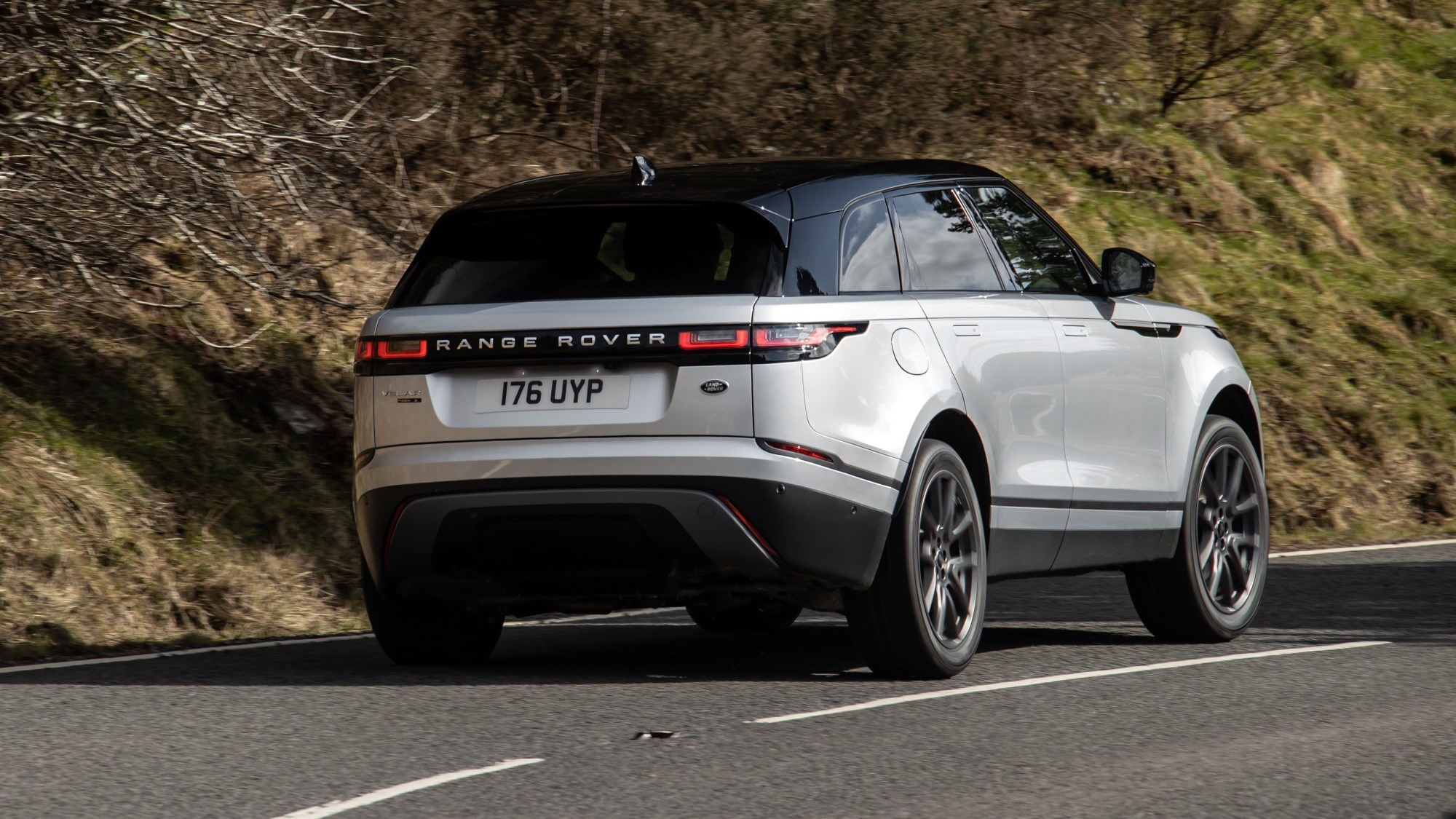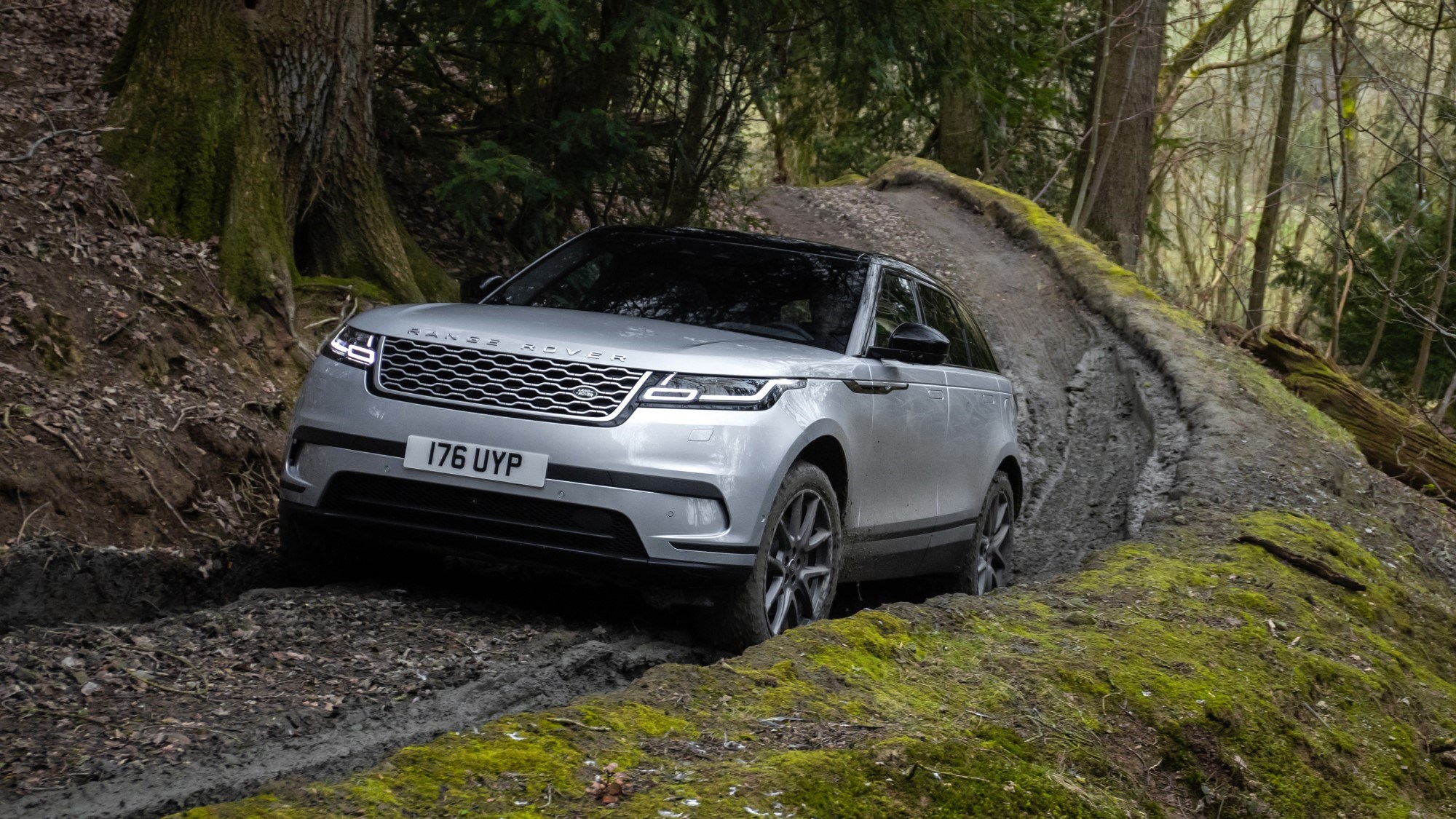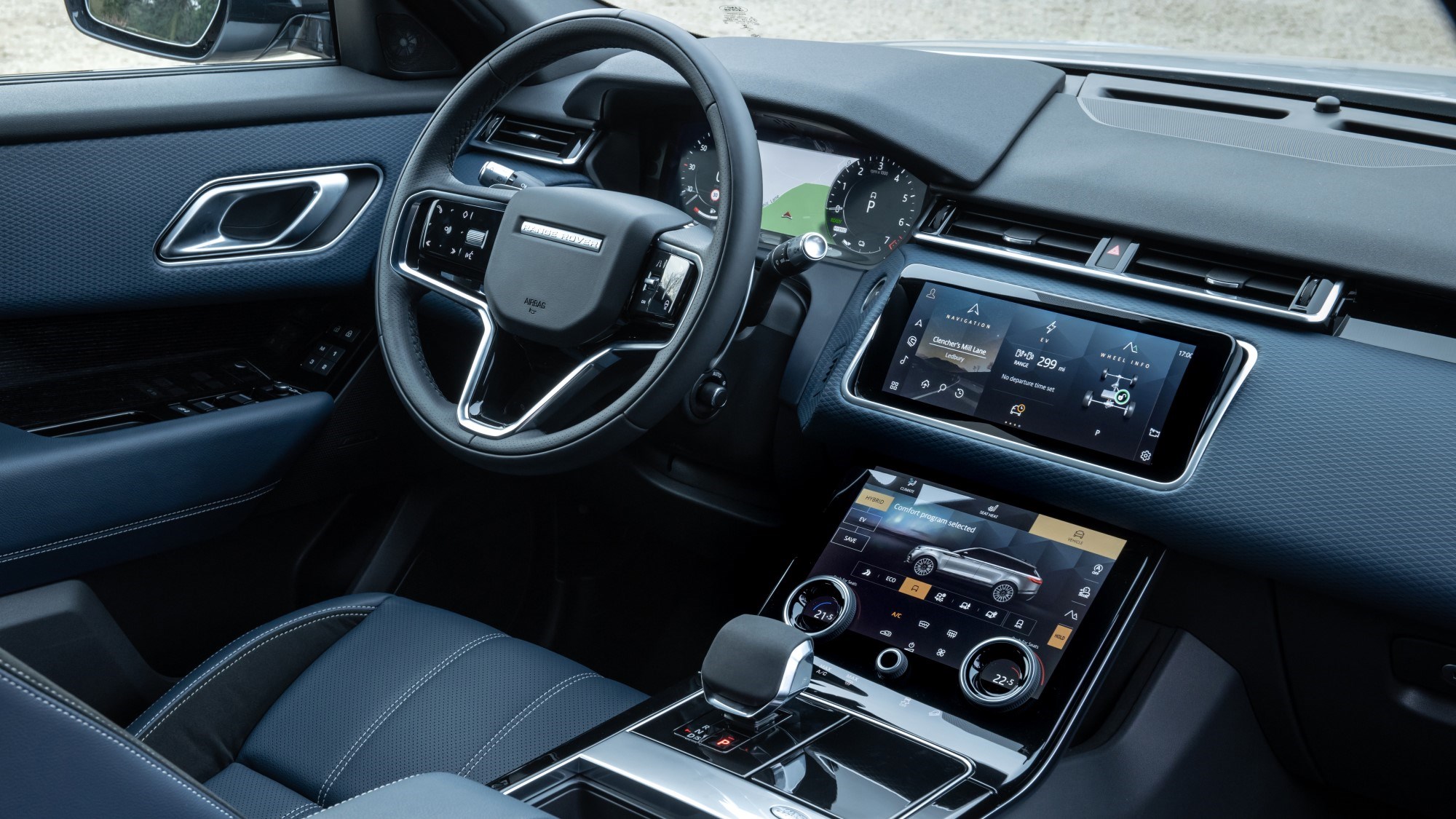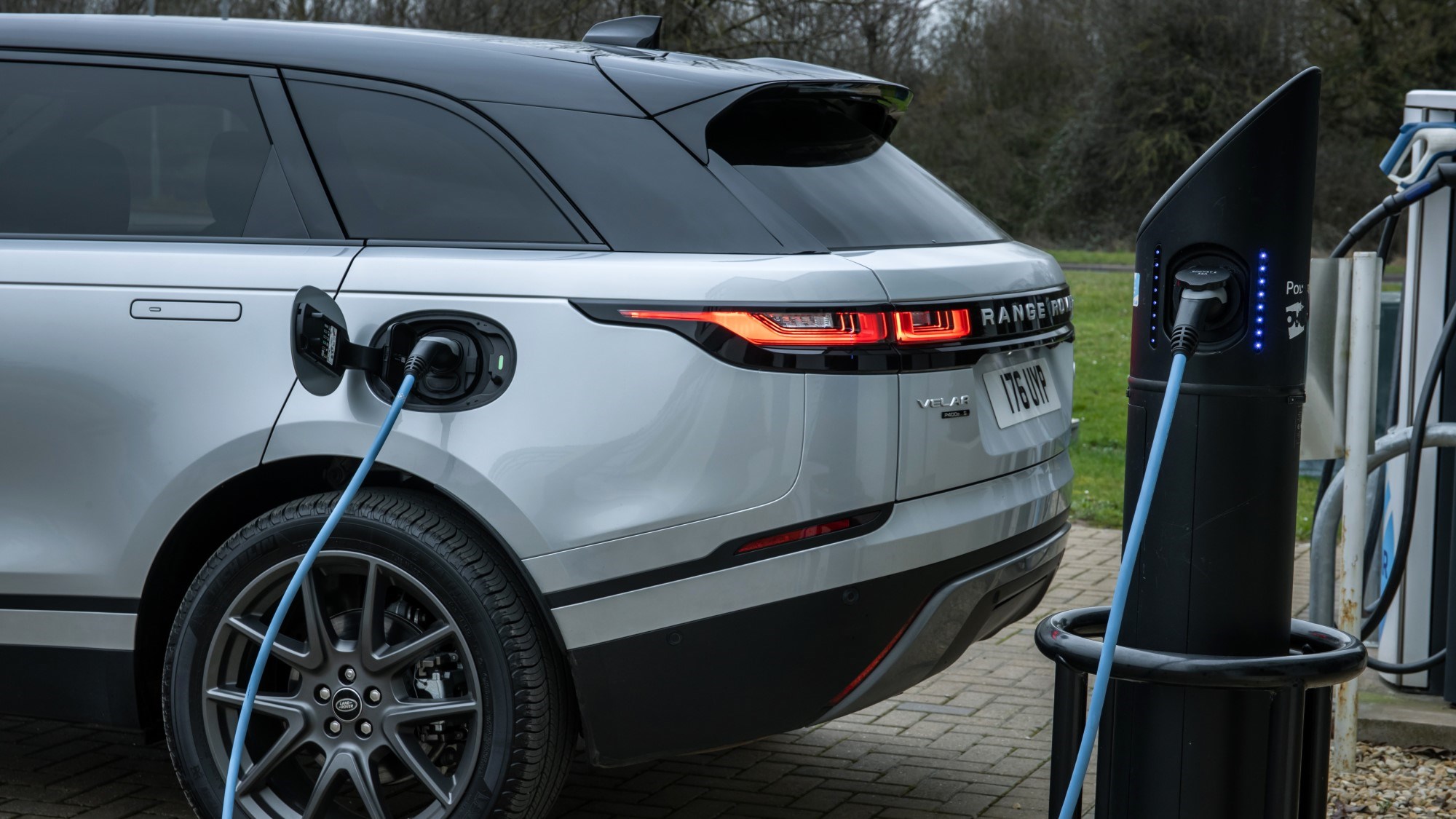► P400e PHEV now available with Velar
► 33-mile electric range, 398bhp
► Velar also gets infotainment upgrades
With its low, sleek silhouette and fashionable image the Range Rover Velar is as close to a ‘Road Rover’ as we’ve been treated to – so far. Now, to sweeten the deal even further, it’s joining the Evoque, Defender and full-fat Range Rover in offering a plug-in hybrid powertrain as an option.
It joins the range alongside overhauled straight-six and four-pot petrol and diesels, with an interior upgrade bringing JLR’s new infotainment system to the party, too.
Range Rover P400e review
What’s under the bonnet?
The Velar P400e uses the same plug-in system as its Defender and Range Rover siblings (as well as the Jaguar F-Pace), instead of the pared-back option you get on the Evoque. That means that it uses a 296bhp 2.0-litre four-cylinder petrol engine and a 141bhp electric motor – with the discrepancy in power bands giving it a total peak output of 398bhp and 472lb ft.

Land Rover claims up to 33 miles of pure-electric running is possible from the 17.1kWh battery pack. These figures are always optimistic in PHEVs, but during our limited time with the car we covered 20+ miles with ease – making it perfect for short commutes or runs across town without ever troubling the petrol engine. And its charging port is on the rear quarter panel, opposite the fuel filler – so no need to unattractively nose into a spot to charge.
The relatively powerful e-motor also meant electric performance was great. Smooth, quick and utterly silent, it really ups the luxury factor in a way even the smoothest petrol or diesel can’t quite match.
That sense of luxury’s spoiled somewhat when you run out of juice, as while the 2.0-litre petrol copes just fine with the Velar’s weight it sounds pretty rough when revved out – and it cuts in with rather a thud, too. The hybrid system found on a Mercedes GLC 300e is smoother in operation.
Is it any good to drive?
It handles. Even at well over two tonnes (the P400e clocks in at 2,158kg DIN) body control is impressive and the thin-rimmed steering wheel controls an accurate and confident rack.
Jaguar Land Rover would rather you opted for an F-Pace if you’re after the last word in handling and response, but the Velar doesn’t disgrace itself on a twisting road – especially if you firm up the suspension and responses in Dynamic mode. The brakes are even nice and progressive, not always a given on PHEVs balancing regenerative and conventional stoppers.

There is a payoff in the ride department, though, exacerbated by the PHEV’s additional battery weight and our test car’s huge 21-inch alloys. Even on its cushiest setting the Velar jars its occupants over bumps, steadfastly refusing to iron out road imperfections in the way its larger Range Rover siblings do.
Deploy both power sources and the Velar will go from 0-62mph in an impressive 5.4 seconds. Fuel consumption officially stands at 130.2mpg – obviously, this depends on how you use the Velar. Longer trips using mainly petrol will see that figure tumble, but do weeks at a time of short journeys with battery charges in between and you’ll scarcely visit a garage at all.
What about off-road?
Ground clearance, wading depth and approach and departure angles are among the weediest in the Land Rover stable, but that still leaves the Velar enough to embarrass most other compact SUVs.

Land Rover let us loose on its Eastnor Castle Experience Centre routes, proving that the Velar can tackle more than any owner is ever likely to chuck at it – deep ruts, loose surfaces and hilariously steep inclines posed zero problems.
What’s new inside?
Unlike other recent updates, Land Rover’s not upgraded the Velar’s cabin much visually – which is fine by us, it already looked and felt fabulous. There’s a new gear selector and steering wheel. It has also upgraded the infotainment to run its new Pivi Pro system, however, which is a massive improvement.
It’s quick to operate, with most functions available in just a couple of taps. There’s integrated Spotify and the capability to pair two phones at once, while over-the-air updates should keep it running smoothly.

Otherwise, things are almost they were, with a pair of high-res 10-inch screens in the centre console controlling all major functions and a clear – if not especially pretty – digital gauge cluster. The dash surface is upholstered and everything feels solid and luxurious to the touch.
Land Rover’s also fitted active noise cancellation, which when combined with pure electric running makes the cabin eerily silent. It works well on the motorway too, though can’t drown out the thrashy engine when you’re changing speeds quickly.
Verdict
It’s still stylish and dynamically impressive as SUVs go, and the Velar’s new plug-in powertrain gives it another great selling point. Easily as capable as any of its rivals, and though it’s a little pricier than something like a Volvo XC60 Recharge or Mercedes GLC 300e the additional luxury, prestige and class more than makes up for it.

Is the plug-in hybrid the best Velar, though? That’s a tougher question. One of the cheaper diesels will be superior for the long-distance blasts that this car excels at, and if your mileage is low there’s a useful cost saving to be had in opting for pure combustion power. Not to mention if you’re sans driveway and charger, the Velar P400e becomes nothing more than an expensive and heavy self-charging hybrid.
If you do lots of short journeys, though, or will benefit from the Velar’s 49g/km CO2 figure (company fleet managers will love you for it) then there’s plenty to enjoy here.